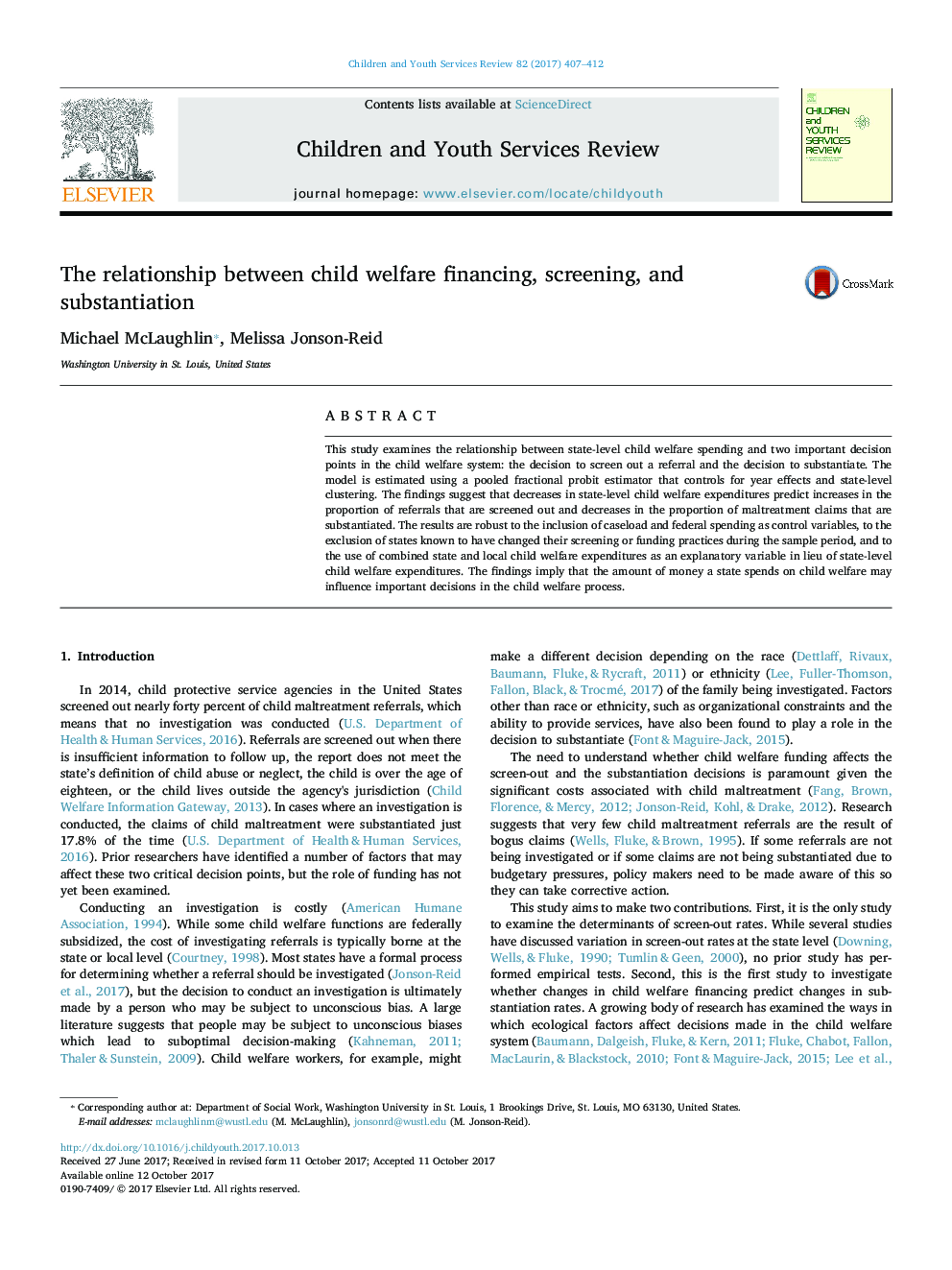| Article ID | Journal | Published Year | Pages | File Type |
|---|---|---|---|---|
| 4936209 | Children and Youth Services Review | 2017 | 6 Pages |
Abstract
This study examines the relationship between state-level child welfare spending and two important decision points in the child welfare system: the decision to screen out a referral and the decision to substantiate. The model is estimated using a pooled fractional probit estimator that controls for year effects and state-level clustering. The findings suggest that decreases in state-level child welfare expenditures predict increases in the proportion of referrals that are screened out and decreases in the proportion of maltreatment claims that are substantiated. The results are robust to the inclusion of caseload and federal spending as control variables, to the exclusion of states known to have changed their screening or funding practices during the sample period, and to the use of combined state and local child welfare expenditures as an explanatory variable in lieu of state-level child welfare expenditures. The findings imply that the amount of money a state spends on child welfare may influence important decisions in the child welfare process.
Related Topics
Health Sciences
Medicine and Dentistry
Perinatology, Pediatrics and Child Health
Authors
Michael McLaughlin, Melissa Jonson-Reid,
